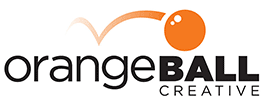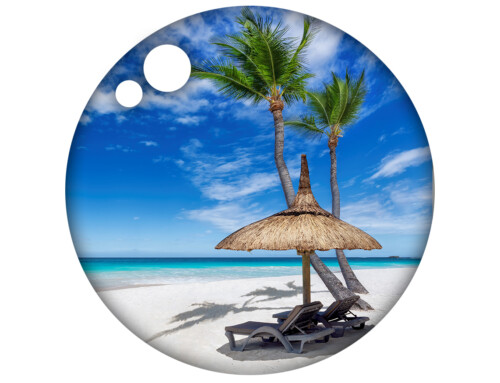
Can Creativity and Process Co-exist, and if So, How?
Years ago, we picked up on what EOS (Entrepreneurial Operating System) calls the Proven Process concept, where we documented clear ways of doing business that we all follow within the OrangeBall ecosystem. The Proven Process concept makes sense. It’s there to define a clear “this is how we get things done” model, streamlining ops, building efficiencies, and creating predictable outcomes throughout the business for our team and clients.
Process is amazing, but here’s an important question to ask…
Can creativity and process co-exist, and if so, how?
The challenge at the core of this question is this. Can we get to a point where we lean so heavily on the process that we begin falling into the “this is the way we’ve always done this” trap? Put another way, does the process become so ingrained over time that it prevents us from tapping into creativity and bringing new approaches into our work?
Here’s an example. At OrangeBall, we have a proven process for how we approach new client websites. It’s far from cookie-cutter, but there is a specific path we walk down each time to scope the project, get aligned on client goals, and create the sandbox we’re going to play in together. Each website comes with its unique complexities, but we always begin in the same place to uncover those complexities and develop the path forward.
This process does everything we want it to. As we initially shared, it streamlines ops, builds efficiencies, and creates predictable outcomes. It also provides our team with that clear “this is how we get things done” model. Everyone knows what to do and when, because the process tells them.
So, what’s the issue?
Recently, I’ve been listening to Rick Rubin’s book The Creative Act: A Way of Being. It’s made me wonder if there’s something the process is missing. Read that again. Is the process missing something? You’ll notice I’m not saying we need to eliminate the process. No way. It’s the glue that holds everything together. What I am wondering is if there’s another angle we could start from, or something we’re missing based on how we do things today. If we apply some new creativity to the process, what’s possible?
Here are five questions we could all be asking about our processes:
- What assumptions are we making about how this process should work, and what happens if we flip them?
- If we could start this process from scratch, how would we design it today?
- What steps in this process are redundant, and how can we streamline or eliminate them?
- How can we incorporate technology or tools we aren’t using to make this process more efficient?
- What would this process look like if designed with the end user’s experience as the top priority?
The goal here is to challenge the process and not give into that “this is the way we’ve always done this” trap. It is to slow down just enough to bring some new creativity to how we do things, looking for that new way to sharpen the process for the next season we’re entering.
Let’s go back to the question from earlier, “Can creativity and process co-exist?” The answer is “Yes!” To take your process to the next level, they must co-exist.
Call-to-Action
Pick one of your processes and challenge it by bringing in some creativity. Ask yourself the five questions above, and then include a few of your own. Good luck and let us know what you find!
Ready for more?
OrangeBall Insights has always been a place to share ideas, explore our purpose and leadership, and chat a little bit about marketing. If this resonated and you’d like to receive weekly ways to bounce higher every day, subscribe here.



